In the 19th century England, like in the Renaissance Italy interest in the occult, magic and astrology flourished as a substitute for religious faith. "Reason died sometime before 1865…" wrote the historian. "…after the Age of Reason came the Age of the Irrational." Bereft of assurances of immortality after so great an attack on biblical revelation were masses of hopeless people "begging for a revelation which was scientifically demonstrable." Ensuing was a widespread flight from reason and a revival of the occult (Barbra Aho, The 19th-Century Occult Revival)
Similar occult revival in the post-communist Russia, Britain and the USA was inspired by the theosophical teaching of the Russian 'witch' (so defined by New Catholic Encyclopedia) Helena P. Blavatsky who in 1875 established in New York the Lodge of the United Theosophists. And thus H. Blavatsky's Esoteric Buddhism became religious bond linking Russia, United States and Great Britain. The series about Harry Potter belong here. Harry Potter is the latest incarnation of King Arthur's Magician Merlin.
The religious activities of a certain Dorijev, the Buddhist Missionary in Russia were awarded with the construction of Buddhist temple in St. Petersburg. Interestingly, Dorijev along with many famous Russian orientalists, was convinced that Communism and Buddhism were compatible. He publicly proclaimed that the teaching of Shakyamuni was an “atheistic religion.”, which is correct, and that it would be wrong to describe it as “unscientific.” The Bolsheviks even went so far as to celebrate the historical Buddha as the original founder of Communism and to glorify Lenin as an incarnation of the Enlightened One. Dalai Lama is a surviving apostle of the era of communism.
At the very moment when the Soviet Union ends, Blavatsky is celebrated and the year is called "The International Year of Blavatsky." A whole program was established to republish her books in the Soviet Union. And it turns out, to cut a long story short, that Mikhail Gorbachev and his wife Raisa were deep friends with someone who was a promoter of the Theosophical doctrines in the Soviet Union, which consequently became one huge Lodge of Theosophy under Buddha.It is a well-known maxim that where religion regresses, superstition progresses. Today we are seeing a proliferation of the occult, spiritism and witchcraft, a surge of interest among youth in dangerous occult links and the dark side of “witch-power.” The association of rock music with the occult and Satanism is well-documented (see Michael Matt’s new book, Gods of Wasteland). We are witnesses of horrific crimes with satanic hues committed by teen-agers and even 11-year-olds.
Theosophic Science
Newton:We are but various contextures of some certain aetherial spirits and vapours
Blavatsky's mission, a Society historian observed, was “to investigate spiritualism, expose its frauds, to enlarge its spiritual scope, and to give it the dignity in the world of science which was its due.” She delivered up an unlikely hodge-podge of Hinduism, Gnosticim, and pseudo-science (kind of fraudulent cloning made in South Korea, the homeland of the new, self-proclaimed New Age Savior), which had a tremendous impact on the anti-Semitic intelligentsia of the West, especially in the Anglo-American area. When Blavatsky died May 8, 1891 in England her ashes were distributed in England, America and India, which prompted G.K. Chesterton to have observed, “A large section of the intelligentsia seems wholly devoid of intelligence.” (G.K. Chesterton)
People communicate with ghosts during sleep
Source: URL: http://english.pravda.ru/science/mysteries/94438-ghosts_sleep-0 03.07.2007 They have their Ghost Whisperers (i.e. imported Scientologists) too:
“A United Kingdom insurance company actually has a "Spook safe Policy!" Terry Meggs, the owner of the Royal Falcon Hotel in Lowestoff, Suffolk, purchased the Spook safe policy from the Ultraviolet Insurance Company after he saw shot glasses shooting across the bar as if invisible hands were pushing them. The hotel is haunted and is also next door to an old graveyard, so Meggs was concerned that someone would be harmed. In an unrelated case, the same insurance company claims that they paid out 100,000 pounds when an American woman died after being thrown over the banister of her home by a ghost.” Two weeks or so later Gazeta Wyorcza reported the decision to build in Warsaw a Center of Science “Kopernik” (Gazeta Wyborcza 19-07-07, 22:37). Recall that The University in Thorun named after Copernicus was the first political initiative of the Red Army after it captured Poland. The Red Army soldiers also conducted the ill-famous Pendulum experiences allegedly proving that the earth is moving. The Blog4Brownback which in the same year exposed Heliocentrism as an atheist doctrine was, of course, ignored totally in Poland.
The general Mediterranean culture would find nothing impossible about that vision of Hector to Aeneas. Nothing in that story would have raised a first-century eyebrow. The dead existed in the realm of Hades or Sheol and could reappear thence to the living. Thus, although Hector's body had flamed to ashes on a Trojan funeral pyre, his body was still visible and recognizable to Aeneas. That the dead could return and interact with the living was a commonplace of the Greco-Roman world, and neither pagans nor Jews would have asserted that it could not happen. That such interaction could generate important process and events, as with Hector saving Aeneas to found the Roman people and the Julian ascendancy, was a commonplace. You did not expect the dead to return from Hades simply to say hello. You could easily say that such a return did not happen this time or that time. You could not say that it never happened anywhere or could never happen at all. (Gregory J. Riley, Resurrection Reconsidered, p, 67). The same logic is behind R. Dawkins's soaring speculations about spontaneous beginning of life in his The God Delusion, a book on the shelves of every branch of Public Libraries.
Hillary Clinton, the former First Lady and the present Secretary of State revealed in1996 that she regularly consults with “spirit of Eleanor Roosevelt”¹ for advice (The Skeptic Magazine, Ten Years of Skepticism) Hillary is solidly behind New Age educational principles.
The above quoted article about ghosts published by the former organ of the Communist Party of the Soviet Union was assigned to the category of mysteries of Science even though the belief in ghosts and spirit was always regarded as a superstition belonging to folklore. So let me elaborate on this identification of belief of the uneducated and superstitious people with the teachings of the learned world adorned with their scientific titles and Nobel Prizes.
Matter (Tree of Life) and Immortality
And the woman said unto the serpent: 'Of the fruit of the trees of the garden we may eat; but of the fruit of the tree which is in the midst of the garden, God hath said: Ye shall not eat of it, neither shall ye touch it, lest ye die' And the serpent said unto the woman: 'Ye shall not surely die; for God doth know that in the day ye eat thereof, then your eyes shall be opened, and ye shall be as God, knowing good and evil. (Gen 3: 2-5)
Tree of Life represents creative forces in the universe. Sunbirds sit on the branches; a five-headed cobra, symbolizing water, rises from the trunk. In the middle of the tree the sun is placed reminiscent of the heliocentrically conceived universe in which energy (Brahma, or pyr technikon of Stoics) plays the most important creative part. One recalls that Akhenaten made solar heat his God, and called it “One” (Equivalence of matter and energy, which never die). --Alexander the Great prays to the sun and moon as he journeys to the world’s end. (From the Alexander Romance in a 16th –century French manuscript).
In chapter LXXXI of the Egyptian Book of the Dead, called “Transformation into the Lotus,” a head emerging from this flower, the god exclaims: “I am the pure lotus, emerging from the Luminous one…I carry the messages of Horus. I am the pure lotus which comes from the Solar Fields…”
In myths and legends from around the world, trees appear as ladders between worlds, as sources of life and wisdom, and as the physical forms of supernatural beings. In one particular instance Greek religion contributed directly to Greek philosophy by handing over to philosophy the doctrine of immortality – a doctrine which in every stage of its philosophical development has retained the mark of its theological origin. Plato, for example, distinctly refers it to the Bacchic and Orphic mysteries.
Taking the term in its widest sense, matter signifies that out of which anything is made or composed. Thus the original meaning of hyle ( Homer's 'υλή) is “wood,” in the sense of “grove” or “forest”, and hence, derivately,”wood cut down” or timber. The Latin materia,, as opposed to lignum (wood used for fuel), has also meaning of timber for building purposes.
The Greeks originally had no word for matter in general, as opposed to raw material suitable for some specific purpose or other, so Aristotle adopted the word for lumber ('υλή) for this purpose. Aristotle had chosen this particular word because of its connotation with the idea of eternity and immortality and, accordingly, in certain philosophies matter as as the stuff out of which Demiurgos makes the world is co-existing with him. It was always there. The idea that everything physical is made of the same basic substance holds up well under modern science, although it may be thought of more in terms of energy or matter/energy. The Hindu term Brahma usually regarded as a name of a deity, actually is a neuter word meaning energy. The Hindu religious systems don't know personal God. Their theology was always theosophy i.e. Physics like that of the Stoics.
Whereas modern science strive to extend the mathematical picture of the physical universe into the realm of organic nature of man, the opposite tendency prevailed in Greek science. There the concepts and pictures of biology were projected into the realms of the physical world, thus transforming the cosmos into a living organism endowed with psyche and nous(Hindu Purusha, i.e. Cosmic Man)
Stoicism, the Roman Variant of Buddhism
The Hindus believe that the universe periodically dissolves (Cp. Big Bang’s contraction) and is then “re-created” (cp. Big Bang’s expansion). The period between dissolution and “re-creation” is known as “Pralaya”, a time of rest between creative periods. A period of creativity is called “Manvantara” and both periods constitute a “Kalpa” or a cycle of “creation.”
The Stoics regarded the cosmos as a finite body surrounded by an infinite void. This enabled the cosmos to expand or contract according to its various cosmic phases as described in the Stoic theory of ekpyrosis. The kalpa of the Hindus was translated by the Stoics as Great Year. The Stoics identified the Great Year with their hypothetical full cycle of cosmic transmutation of matter which consists of the preponderance of fire in the beginning, the differentiation of the other three elements in the intermediate stage, and the ascendancy of fire at the end, after which the cycle of transmutation begins anew. The cosmic cycle thus means that the cosmos, although subject to continuous metabolism, never dies and that its immortality is only another expression of the infinite extension of time, of the never ceasing succession of events. The mythic bird phoenix born gain out of its ashes became the best known symbol of this philosophy. The Romans had also their problem of global warming; Ekpyrosis originally denoted that period of cosmic cycle where the preponderance of the fiery element reaches its maximum. Reduction of gas emissions into atmosphere won't prevent the final fire. I don't understand how the scientists who are, so to say, spiritually, Stoics ignore this problem. It is inherent in Big Bang! The modern Stoic R. Dawkins writes: “The design hypothesis postulates a God who wrought a deliberate miracle, struck the prebiotic soup with divine fire and launched DNA, or something equivalent, on its Momentous career” (The god Delusion: 137). And that's exactly what lurks behind Darwin's “Little Worm Pond”
The entire creative process was labeled by the Hindus as “the breathing out of Brahma” while the dissolutionary process was seen as “the breathing in of Brahma”. The fiery breath infusing the body was called by the Stoics pneuma. Pneuma was the “creative fire” of the cosmos, a pyr technikon. The same pyr technikon is creating ghosts of the series Ghost Whisperer. It had the status of divinity, and was equated with both god and cosmic reason. Ex 32:24 reports miraculous birth of Golden Calf out of creative fire: `Let any who have gold take it off'; so they gave it to me, and I threw it into the fire, and there came out this calf." The often-quoted Stoic sentence, “Nature is an artistically working fire, going on its way to create,” should be reminded in this context. The Vedic god Syria was a solar bull. According to the Assyrians, the bull was born of the sun. There is a long history behind John Bull, the symbol of the Britons. R. Dawkins is his votary.
Pneuma and Newton
This Stoic term pneuma is the key opening the deepest secrets of the Newton mind, so let us dwell on it for a while. The Stoic cosmos is filled with an all pervading substratum (also known as 'substance')called pneuma, a term used synonymously with air (Cp. 'airhead!). A basic function of the pneuma is the generation of cohesion of matter and generally of the contact between all parts of the cosmos (Newton's gravity). (Carl Sagan's Contact' was inspired by this philosophy)
Sextus Empiricus, gives us the reason on which the Pythagoreans and Empedocles based their belief that the fellowship of men is not only with one another and with their gods, but also with animals: for there is one spirit (pneuma) which pervades, like a soul, the whole universe, and which also makes us one with them.” This link between gods, men and animals was observed in the Egyptian Theozoology. Theosophy is a follow up of this Egyptian Theozoology. And so is the Constantine dogma of 'consubstantiality'. (Homoousios)
The Stoics regarded the pneuma as the generator of physical qualities - the dogma immortalized by Descartes's 'Cogito ergo sum'). Chrysippos in his On Physical State wrote: The physical states are nothing else but spirits, because the bodies are made cohesive by them. And the binding air is the cause for those bound into such a state being imbued with a certain property which is called hardness in iron, solidity in stone, brightness in silver.” (...) Matter, being inert by itself and sluggish, is the substratum of the properties, which are pneumata and air-like tensions giving definite form to those parts of matter in which they reside.” Physis expresses organic structure and psyche the structure of the living being.
As pneuma took over some of the characteristic attributes of aether, there began a confusion of these two terms and one was substituted by the other. Cicero says that “air resembles aether and is closely connected with it.” Arios Didymos expresses it directly: “Pneuma...has become analogous to aether, so that both are used synonymously.” Similarly, Clemens Alexandrinus referring to a passage in Aratos' poem, indicates that he would prefer to attribute the binding force of the cosmos to aether rather than to the Stoic tension (i.e. a pulling force' like attraction) of the pneuma. (34)
During the Middle Ages, when Aristotle reigned supreme, aether again became the element confined to the celestial spheres, but from the beginning of the 17th century on, the term was generally used to express the universal substance imbued with all the properties attributed to it by the Stoics, as is well known from the writings of Descartes, Boyle, Newton and others. That explains Newton's identification of gravity with the spiritual body of Jesus Christ.
In the Stoic doctrine, which is solar mythology dressed up as philosophy, bodies are made up of two principles, a passive, matter, and an active principle, form; but form itself is corporeal. It is warm vapour (pneuma), or fire, yet fire distinct from the element of this name; it is primitive fashioning fire (pyr technikon), sungod. In order to form the world a part of it changed itself into the elements, fire, air, water, earth, and constituted the body of the world, while another part retained its original shape, and in that shape confronts the first as form or soul. This was pure materialism, or spiritual materialism of the Aryan religious tradition.
We must remember that, although the Stoics believed in the corporeal nature of the pneuma, they came to regard it as something not akin to matter, but rather to force (force was identified by Leonardo da vinci with 'spirit'). The idea of the existence of forces continuous in space and time merged in Stoic doctrine with the conception of the ever-present and ever-permeating Deity. Pneuma became a concept, synonymous with God; On the one hand, natural force (i.e. pneuma) was seen as endowed with divine reason, and pneuma was given epithets like “sensible” or “intellectual” thus alluding to its god-like nature. On the other hand, God was identified with the all-penetrating pneuma, being totally mixed with hapless matter , and divine reason was defined as corporeal pneuma.
It is evident that the identification of God and Force derived from the conception of an agent which had the faculty of shaping things and causing changes in the physical world. Force as a universal cause in this sense, according to the Stoic conception, shares with matter both extension and continuity, but it differs from matter in that it has very little substantiality (and bulk)
Newton went even further and made conjectures about the ether as the origin of sensation. He speaks of “animal spirits (A. Mesmer transformed those “spirits” into animal magnetism but you have to keep in mind that Thales attributed soul to the magnet in order to explain its action on iron), of an aetheral nature subtle enough to pervade the animal juices...”, and he assumed that “the coats of the brain, nerves and muscles, may become convenient vessel to hold so subtle a spirit.” This statement is reformulated very clearly in the famous last paragraph of Principia: “And now we might add something concerning a certain most subtle spirit which pervades and lies in all gross bodies, by the force and action of which the particles of bodies mutually attract one another at near distance as well repelling as attracting the neighboring corpuscles (later Newton identified this “most subtle spirit” with the spiritual body of Jesus Christ); and light is emitted, reflected, refracted, and heats bodies; and all sensation is excited, and the members of animal bodies move by the command of the will, namely by vibrations of this spirit, mutually propagated along the solid filaments of the nerves, from the outward organs of sense to the brain, and from the brain into muscles.(Principia, ed by F. Cajori, 1947: 547) Here we see the hypothetical ether taking over one of the essential functions attributed by the Stoics to the pneuma.
An essential part of the Stoic philosophy is the hypothesis that there exists a centre of perception and consciousness, the “ruling part of the soul” (hegemonikon) which is located in a defined part of the body (most of Stoics identified it with the heart), band which is in the control of the five sensory organs, the generative part of the body, and the faculty of speech. Every stimulus from outside is conducted from the specific sense organ excited by it to the hegemonikon, which centralizes and coordinates the various impressions, elevates them into consciousness and then releases the impulse reacting to the sensations. The vital function of the hegemonikon as the central seat of consciousness, unifying all the activities of the soul and maintaining and regulating its contact with the external world, clearly defines a dual direction of communication: from the centre of the body to the various organs on its surface, and vice versa. It is through the incessant movement of pneuma to and fro between the hegemonikon and the surface of the body and this two way communication is established.
Two more analogies will furnish additional evidence for the assertion that the Stoics regarded the movement of the penuma as some sort of propagation of a state. In one of them the “seven parts of the soul” growing out of the hegemonikon and extending through the body are compared to the tentacles of an octopus...The term “by close contact” (de proximo) is a most striking expression of the Stoic principle of contiguous action which is here demonstrated by the propagation of an impact through the medium of the taut threads of the cobweb. In the Aryan solar mythology Kama-Manas is the link joining our animal (i.e. physical) to our spiritual nature, and is the battle-ground of life's struggles (for survival). Man is primarily divine, a spark of the Divine life; this living flame passing out from the Central Fire, weaves for itself coverings within which it dwells and thus becomes the Triad, the Atma-Buddhi-Manas, the Immortal Self.
In the paper entitled De Aere et Aethere Newton wrote: “Just as bodies of this earth by breaking into small particles are converted into air, so these particles can be broken into lesser ones by some violent action and converted into yet more subtle air which, if it is subtle enough to penetrate the pores of the glass, crystal and other terrestrial bodies, we may call spirit of the air, or the ether. The incorporeal ether which facilitates gravitation (The Stoic hexis) is actually the body or spiritual form of Jesus Christ.” Clemens Alexandrinus wrote: “It is better to take aether as the all unifying and binding substance, as was also said by Empedocles.” (Stromateis, V, 8) If this were really true, then whatever cohesion would be created by the pneuma should exists in all bodies. But this is not the case,for some bodies are cohesive and others discontinuous ... which means that those bodies which fall apart would contain no binding pneuma (Alexander Aphrodisiensis, De mixione, p. 225,6 ff) The wafer of the Holy Communion is supposed to prevent your body from disintegrating, therefore it resembles a little sun.
Half a century or so ago, the most authoritative encyclopedia of history in the U.S. listed Newton only once, and then only to indicate that he was made Warden of the Mint in 1696.(Gerald Holton Finding Favor with the Angel of the Lord: Notes Toward the Psychobiographical Study of sceintific Genius; in: The Interaction Between Science and Philosophy. Ed. By Y. Elkana. 1974. Atlantic Highlands, N.J., p.385) On Oct. 4, 1957 when the first sputnik was launched from the Soviet Union, the Soviet scientists assured that its speed and trajectory were calculated using Newton’s Laws, the same laws that Halley used to calculate the trajectory of his comet, which in 1986 abandoned its usual trajectory over the Northern Hemisphere and went instead to the Southern one.
I see the inspiration for this particular idea of Newton's in the icon of Jesus Christ in a painting of the descent from the cross in the church of Rennes-les-Bains; the crown of thorns has been given the appearance of a gigantic spider. The spider belongs to the mythological lore of the Brahmins who assert, that the world arose from the infinite spider, who spun the whole complicated mass from his bowels, and annihilates afterwards the whole or any part of it, by absorbing it again, and resolving it into his own essence (Cp. Big Bang's rhythm of expansion and contraction). The spider is a variant of Brahma.¹
G.J. Von Leuchen aka Rheticus was the only pupil of N. Copernicus. After having spent two years with Copernicus in Frauenburg (This town became the spiritual centre of the International Feminist Movement) he went to Danzig where he published his Narratio Prima or the First Report (1540) which is still considered to be the best introduction to Copernicus' De revolutionibus orbium coelestium. In 1542 Rheticus traveled to Nuernberg to supervise the printing of the Copernicus' book by Johannes Petreius.
A short passage in his Narratio (p. 465,12; 462,22,35) is the best key unlocking the astrological taproot of De revolutionibus. In this passage he refers to the sun not only as God’s steward of nature and king of all distinguished with divine Majesty, but also explains that the sun, like the heart (Hegemonikon) in a body, guides the stars: like a ruler who does not need to go to various towns in order to execute his official duty, so the heart does not have to go to head, to feet, or to other part of the body in order to sustain life. This was a perennial mantra of all heliocentric astrologers throughout the ages.
Some of Newton's early ideas derive the aether from the principles of continuity and mixture in a picture surprisingly close to the basic Stoic assumptions: “Perhaps the whole frame of nature may be nothing but various contextures of some certain aetherial spirits and vapours, condensed as it were by precipitation...and after condensation wrought into various forms...Thus perhaps may all things be originated from aether.” In 1887 Albert a. Michelson and Edward W. Morley, conducted an experiment that put an end to the ether concept. But Pravda still believes Newton. Let me remind here that the early Bolsheviks were regarded as Russian Americans.(See Rene Fuelop-Miller, the Mind and Face of Bolshevism. Harper Torchbooks. 1965)
In the 19th century, hylozoism had been revived by some thinkers as a postulate of Science. Literally taken, it would be materialism, and in that sense is indefatigably advocated by E. Haeckel, who identifies mind with organization and life, and life with energy, which he makes a property of the atoms. Matter is for him the only reality. He, moreover, imagines ether to be the primitive substance, a part of which, as was the case with the primitive fire of the Stoics, transformed itself through condensation into inert mass, while another part of it subsists as ether and constitutes the active principle, spirit. Once the body, or inert mass rots away, the spirit is a free agent again, ready to counsel or frequent bars and pubs, preferably those close to cemeteries.
"Vishnu in the form of the Solar active energy, neither ever rises nor sets, and is at once, the sevenfold Sun and distinct from it," says Vishnu Purana (Book II., Chap. 1 1).
Universe, a Seven-Storey Cake
You have a Universe manifested in seven different forms of matter, subtle at the beginning, denser at the end, and, so to speak, arranged in seven different stages or, as we say, seven different planes of manifestation. To take a very rough image, to put to you by physical analogy what I mean, you might have in a chemical experiment a receiver that appeared to be empty, you might subject that receiver to constantly increasing cold. As you lowered the temperature the apparently empty receiver would soon be filled with a delicate mist; as you continued to lower the temperature, that mist would gradually assume the form of definite vapour, then of definite liquid, and further on of solid(the Stoic pneuma of physis is more humid and colder, while that of psyche is drier and hotter. To say that pneuma under certain circumstances is “wetter and colder” and sometimes “drier and hotter,” comes very near to the Newtonian conception of a simple substance “intermixed with various vapours and exhalations). (Annie Besant, excerpt from the address given in London on September 4th, 1891, to the United Democratic Club. A. Besant was one of two leading figures in Theosophy movement in 19th century)
The worm of today is the God of tomorrow. (Swami Vivekananda)
Newton's idea was to explain the force of gravity by the gradually varying degrees of density of the ethereal medium “Is not this medium much rarer within the dense bodies of the sun, stars and planets and comets than in the empty celestial sphere between them? And in passing from them to great distances, doth it not grow denser and denser perpetually and thereby cause the gravity of those great bodies towards one another, and of their parts towards the bodies; every body endeavoring to go from the denser parts of the medium towards the rarer? As the Gnostics taught? When we try to find a closer analogy to the Stoic idea of the working of the pneuma, it will be worth while to contrast this principle of differentiation by density gradients with Newton's earlier speculations on the aether. In his letter to Oldenburg before, he says: “But it is not to be supposed that this medium is one uniform matter, but composed partly of the main phlegmatic body of aether, partly of other various aethereal spirits, much after the manner that air is composed of the phlegmatic body of air intermixed with various vapours and exhalations. For the electric and magnetic effluvia, and the gravitating principle seem to argue such variety. The principle of differentiation by mixture propounded here is very similar to that of the Stoics which we would trace back to that of Diogenes of Apollonia. Pneuma, it is true, had gradually become the “fifth element”, identified with aether, and was probably in the course of time detached from its origins and regarded as a simple substance. The Aryan idea of castes and Stalin's idea of purges are rooted in such a teaching.
Science/Mysteries.uk
Well, Sir William Crookes, Physicist, chemist and a President of Royal Society, claimed to have seen materialized, by scientific precipitation spirit forms, or spiritual bodies walking and talking during séances He invited the two secretaries of the Royal Society, Professor Stokes and Sharpey, to visit his home to witness the phenomena for themselves – an invitation which neither of them accepted. Sir Crookes himself materialized a spirit whom he named Katie King and described her in such words:
"Round her she made an atmosphere of life;
The very air seemed lighter from her eyes;
They were so soft and beautiful and rife
With all we can imagine of the skies;
Her overpowering presence makes you feel
It would not be idolatry to kneel!"
(See his pamphlet The Last of Katie King, p. 112)
Among those most eager to reevaluate Leni's work after Olympia played in England were the cineastes at London's British Film Institute. In April 1960, they invited her to lecture at the National Film Theatre on “My Work in Films” as part of a series of celebrity screenings. Among Leni's defenders was the venerable documentarian John Grierson. He reportedly kissed her foot in public and said, Lenin Riefenstahl is one of the greatest filmmakers in the world (which she, certainly, was not), and certainly the greatest female filmmaker in history. Incidentally, the films that made her famous were banned in her homeland. (Steven Bach. LENI. The Life and Work of Leni Riefenstahl.Alfred A. Knopf New York 2007)
But wait, there is more. Ch. Darwin, writing to Sir Francis Galton on 23 Jan. 1872, said: “Have you seen Mr. Crookes? I hope to heaven you have, as I for one should feel entire confidence in your conclusion!” In 1874 after reading Crookes’s Notes of an Enquiry into the Phenomena Called Spiritual, Darwin remarked in a letter to Lady Derby, “If you had called here after I had read the article you would have found me a much perplexed man. Cannot disbelieve Mr.Crookes’s statements, nor can believe his results!” Galton did indeed call in Crookes, and he was soon able to report to Darwin, in a letter dated March 28, 1872: “Crookes is working deliberately and well.” Three weeks later Galton wrote: “Crookes, I am sure so far as it is just for me to give an opinion, is thoroughly scientific in his procedure, like the Pravda assures us. I am convinced; the affair is no matter of vulgar legerdemain.” And that's what Science, according to Blavatsky's Isis Priesthood, is.
Crookes’s records of his experiments fall far short (as he himself admitted) of the standards the subject demanded. His scientific achievements may have engendered a certain assumption of omnipotence, for in 1871 he was able to say without embarrassment: “Others have gone so far as to question my veracity: “Mr. Crookes must get better witnesses before he can be believed!” Accustomed as I am to have my word believed without witness, this is an argument which I cannot condescend to answer.” (Man, Myth, Magic, v. 4, p547n). That’s how a President of the Royal Society ‘s mind works. One thing, however, remains to be explained, we don’t know if Sir Crookes danced with Katie King and, if he cared to weigh her with Colonel Olcott’s spring balance. Keep in mind that, according to the Fifth Gospel of Newton, gravity is the spiritual body of Jesus Christ... Will somebody materialize Jesus Christ, or John Paul II, please? In 1874, Walt Whitman was invited to write a poem about the Spiritualism movement, to which he responded, "It seems to me nearly altogether a poor, cheap, crude humbug." Therefore the genial poet W. Whitman willnever be as popular as Ch. Darwin or R. Dawkins for that matter.
Evolution as Religion of Blavatsky's Isis Priesthood
The promotion of evolution – both biological and cosmic – by its champions grows ever more evangelical as time goes by. Proponents sound more and more like preachers. Who can forget the priestly image of Carl Sagan standing behind the scientific pulpit on Cosmos, with majestic music and inspiring images in the background? The book titles sound increasingly religious – Darwin's Cathedral, River out of Eden, The Devil's Chaplain, The Creation, The Demon-Haunted World, The Dragons of Eden, The First Three Minutes, The God Gene, In the Beginning.(Karl W. Giberson, Saving Darwin. How to be a Christian and believe in Evolution. Harper One. 2006)
The part of my essay dealing with the Stoic physics was based on Prof. S. Sambursky's book The Physics of the Stoics. New York 1959. However, unlike Prof. Sambursky I reject heliocentrism and evolutionism.
Saturday, April 3, 2010
Subscribe to:
Post Comments (Atom)

















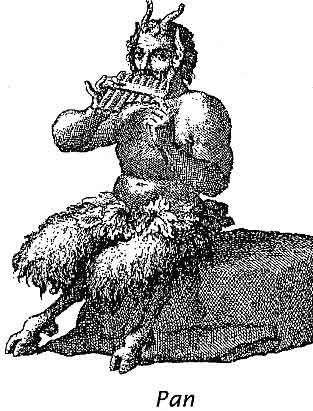














































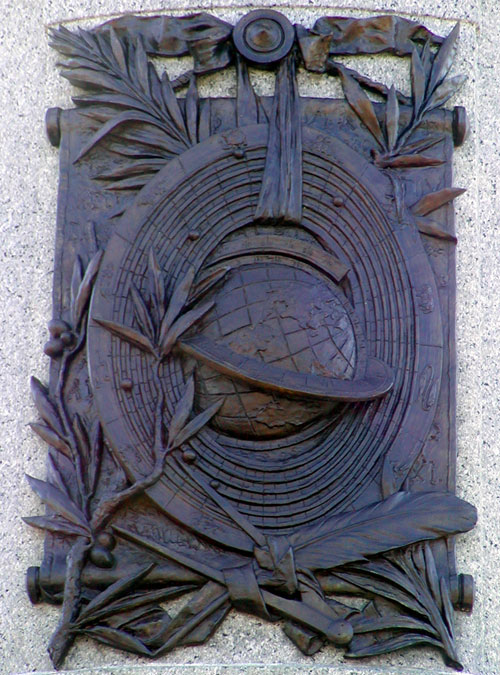


























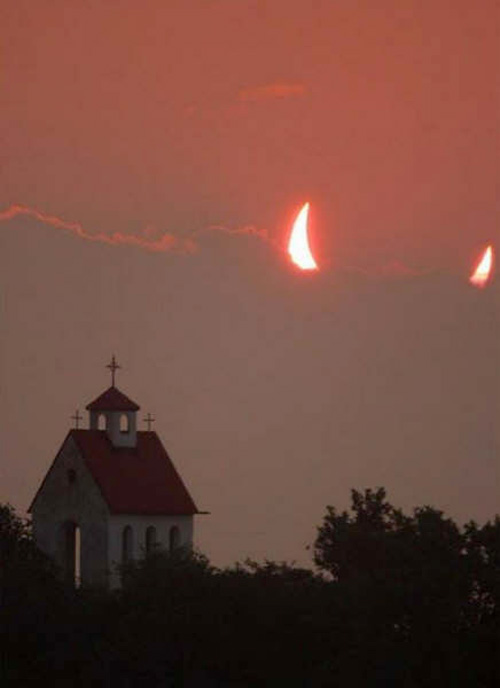












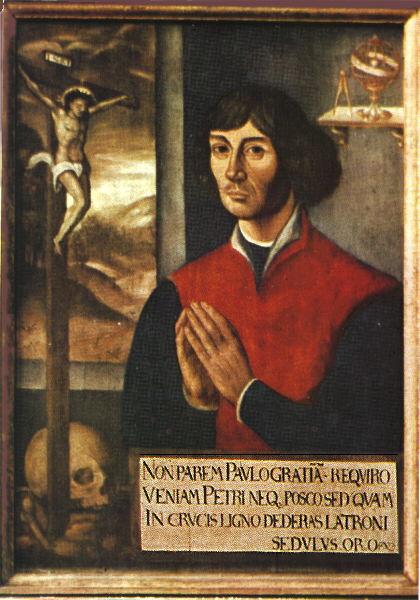















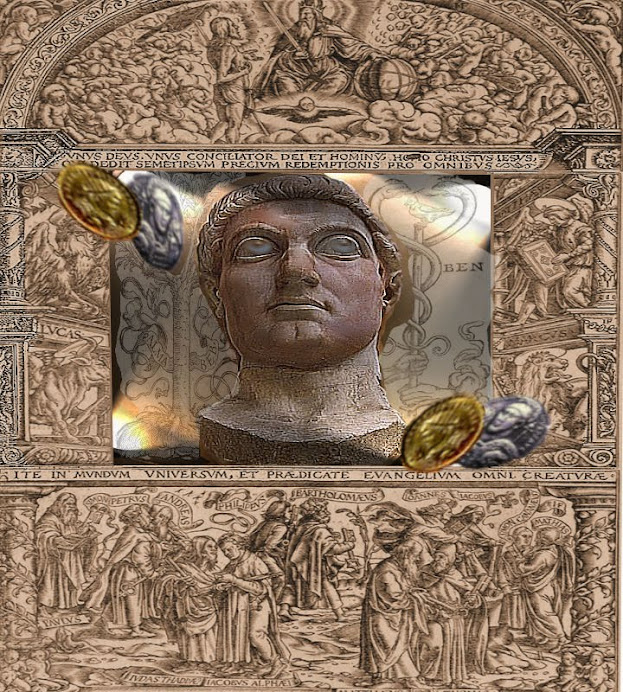



















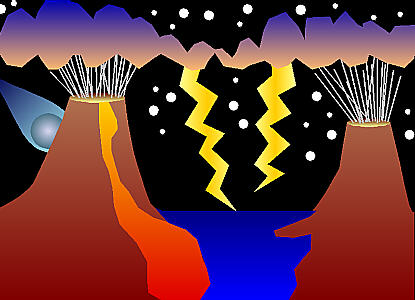


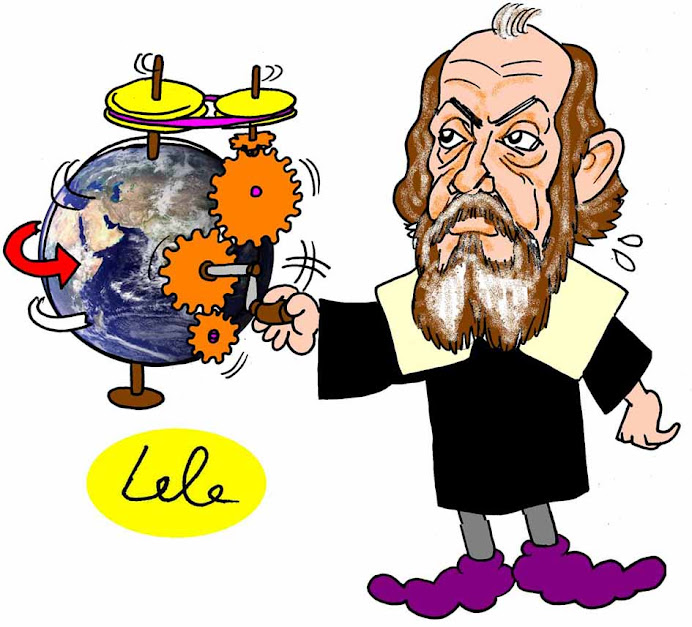













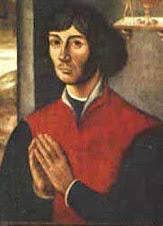.jpg)



















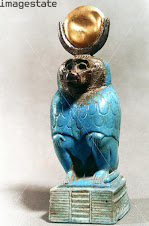








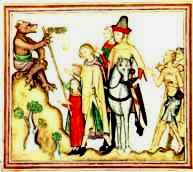

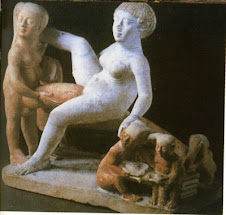











.jpg)





























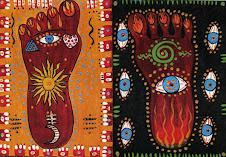
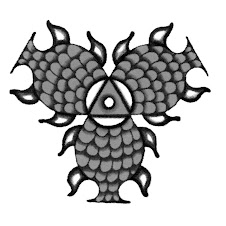











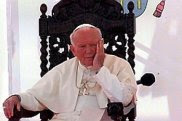




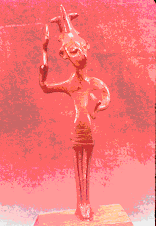










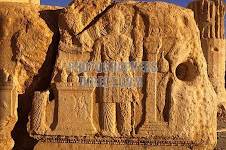
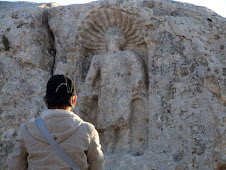






.gif)





















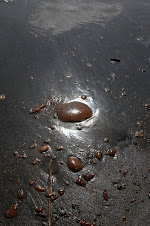









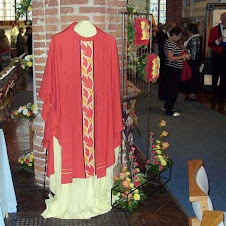


























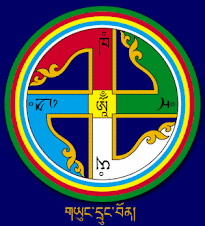

























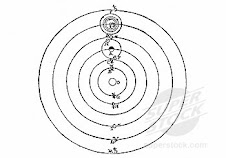

.jpg)













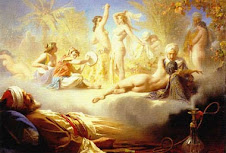
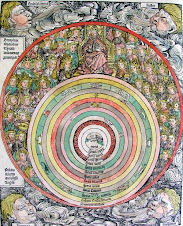












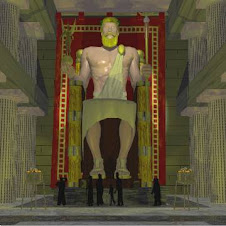





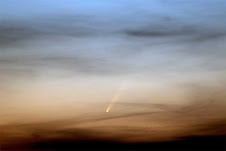












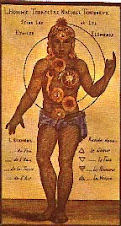
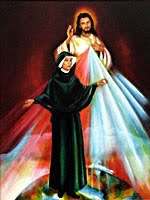
















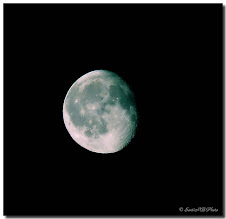




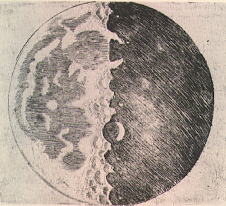


















































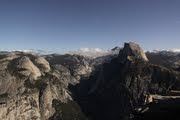

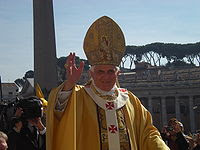

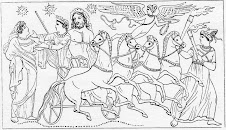








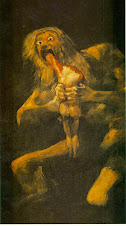




















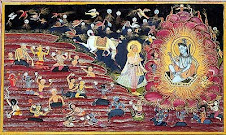

















++of+the+Sun+god..jpg)

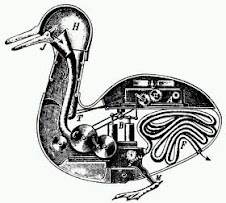








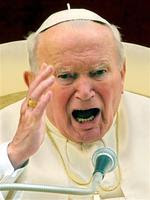


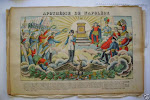



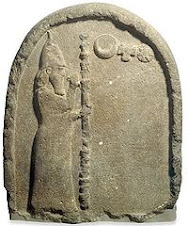





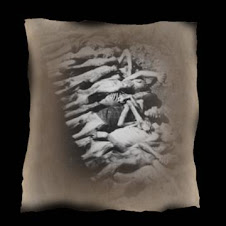




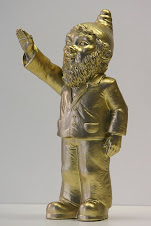
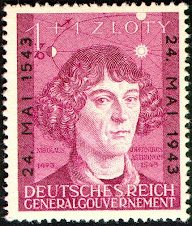








No comments:
Post a Comment